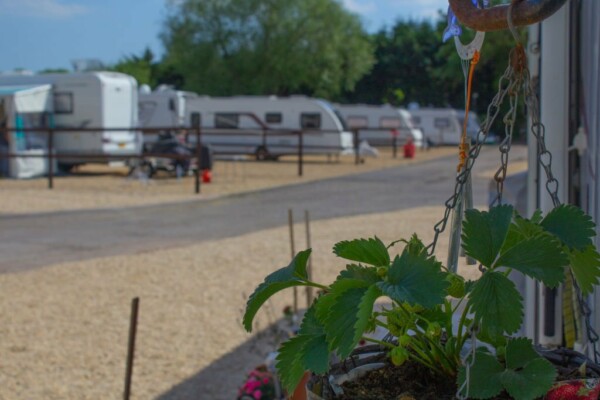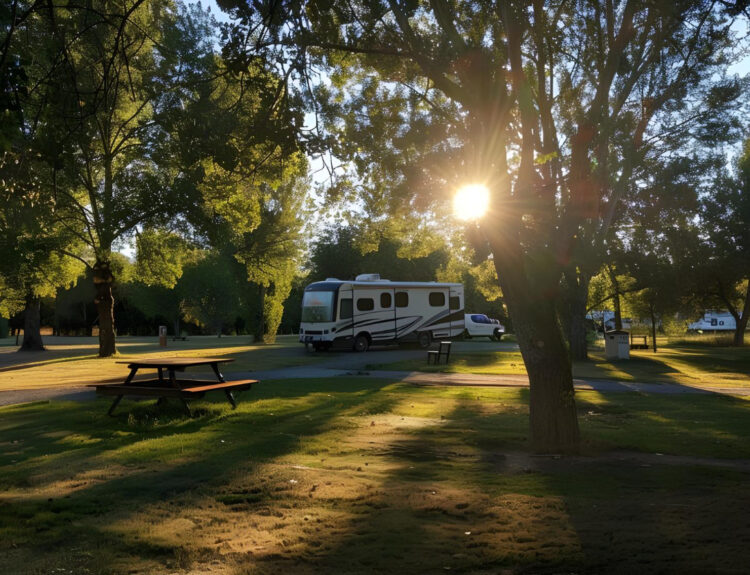The RV park industry is more than just a business; it’s a thriving community that brings together travelers, adventure-seekers, and outdoor enthusiasts. With the rise in RV travel, particularly in North America, understanding the real profit of an RV park has never been more critical for entrepreneurs looking to succeed in this competitive market.
However, determining the real profit of an RV park isn’t as simple as subtracting expenses from revenue. It requires a nuanced approach that considers various revenue streams, operating expenses, non-cash benefits, tax breaks, and even the potential for future growth.
Whether you’re a seasoned RV park owner or just starting, getting a clear picture of your profit can guide your investment decisions, strategic planning, and long-term sustainability.
So let’s dive into the 4-step process to accurately determine the real profit of an RV park.
Step 1: Calculate the Net Income
Calculating the net income is the foundational step in understanding the real profit of an RV park. It begins with identifying all revenue streams, including rental income from both short-term and long-term guests, fees from amenities, and income from special events or concessions.
Once you’ve itemized these revenue sources, you must subtract the total operating expenses. This includes both fixed costs like rent or mortgage payments, property taxes, and insurance, and variable costs such as utilities, maintenance, staff wages, and marketing.
Net Income = Total Revenue − Total Operating Expenses
For example, if your RV park generates $200,000 in revenue and incurs $100,000 in expenses in a year, your net income is:
Net income = $200,000 – $100,000 = $100,000
So to calculate net income, you will need to track your revenue and expenses on a monthly or yearly basis.By calculating the net income, you’re capturing a snapshot of your RV park’s financial performance over a specific period. This figure serves as the starting point for more in-depth analyses and allows you to evaluate how efficiently your business is running.
Remember, transparency and accuracy in identifying all revenue and costs are vital to ensure that this calculation reflects the true state of your business. Understanding your net income is the first significant step toward determining the real profit of an RV park and building a successful venture.
Step 2: Adjust the Net Income for Non-Cash Benefits and Tax Breaks
The second step to determine the real profit of an RV park is to adjust the net income for owner non-cash benefits and tax breaks.
Non-cash benefits are the perks or advantages that you enjoy as the owner of the RV park, such as living on-site, using the amenities, or taking personal trips with your RV.
Tax breaks are the deductions or credits that you can claim on your tax return, such as depreciation, interest, or home office expenses.
Non-cash benefits and tax breaks reduce your taxable income, but they also increase your real profit. Therefore, you need to add them back to your net income to get a more accurate picture of your profitability.
The formula for adjusted net income is:
Adjusted net income = Net income + Owner benefits + Tax breaks
For example, if your net income is $100,000, your owner benefits are $20,000, and your tax breaks are $10,000 in a year, your adjusted net income is:
Adjusted net income = $100,000 + $20,000 + $10,000 = $130,000
Step 3: Compare the Adjusted Net Income with the Cost
After adjusting the net income for non-cash benefits and tax breaks, it’s time to compare this figure with the total cost involved in operating and maintaining your RV park. This step is crucial for evaluating the real profit of an RV park.
Begin by outlining the overall investment costs, including the initial purchase, development, upgrades, and any ongoing maintenance expenses.
The adjusted net income, now reflecting a more realistic profit scenario, should be compared to these costs. This comparison provides a deeper understanding of how the income matches up against expenditures, revealing the true profitability.
Real Profit = Adjusted Net Income − Total Costs
This comparison is not merely about numbers; it’s about evaluating whether your RV park business is sustaining itself efficiently and where improvements can be made.
Understanding this relationship between adjusted net income and costs is paramount in assessing the financial viability of your RV park. It aids in strategic decision-making, fostering growth, and ensuring that your business is on a path that aligns with your financial goals.
Book a FREE, personalized demo
Step 4: Evaluate the Potential for Growth

Understanding the real profit of an RV park is more than a snapshot of current financial standing; it’s also about forecasting future potential and growth opportunities. This final step focuses on evaluating the potential for growth, both in terms of revenue and overall business expansion.
First, assess market trends within the RV park industry. Look at the travel patterns, customer preferences, emerging technologies, and competitive landscape. Understanding these elements can uncover growth areas that align with your business model.
Then, evaluate your RV park’s existing services, amenities, and offerings. Are there untapped opportunities for expansion or diversification? This might include adding new facilities, targeting different customer segments, or even forming strategic partnerships.
Now how can you develop strategies for sustainable growth? Sustainable growth requires careful planning and execution. Consider developing a growth strategy that balances short-term gains with long-term sustainability. This might include reinvesting profits, seeking external funding, implementing new marketing strategies, or improving operational efficiency.
Digital technology can be a great ally when seeking to achieve sustainable growth. Leveraging a campground reservation software can help you optimize campground management and handle your RV park’s growth smoothly.
Also, increasing your park’s credibility and visibility by enhancing your website will allow you to unleash the full potential of your business. Roverpass Premium Website Builder can help you create a high-quality website that will make your RV park stand out in the digital landscape.
Finally, make sure you thoroughly evaluate risk and return. Growth often comes with increased risk. Assess the potential risks associated with various growth strategies and weigh them against the expected returns. This risk-return analysis will help in choosing the most appropriate growth paths.
By taking the time to evaluate the potential for growth, you’re positioning your RV park for success beyond the immediate present. This forward-thinking approach ensures that your business not only understands its current real profit but also prepares and plans for future prosperity and resilience.
Importance of Knowing the Real Profit of Your RV Park

Truly comprehending the real profit of an RV park goes beyond mere numbers; it’s the compass that directs your business decisions. This knowledge illuminates areas of strength and potential vulnerabilities, ensuring your venture remains resilient amidst changing market dynamics.
Following this 4-step approach is not just about crunching numbers, but about crafting a vision for sustainable success. It’s this clear financial insight that ultimately empowers RV park entrepreneurs to make informed choices, innovate, and thrive in the competitive landscape.
Keep reading our blog to learn more about how to thrive in the RV park business.






